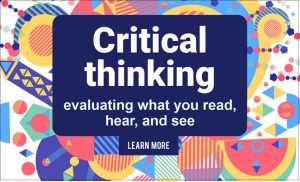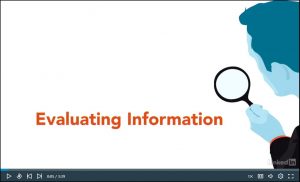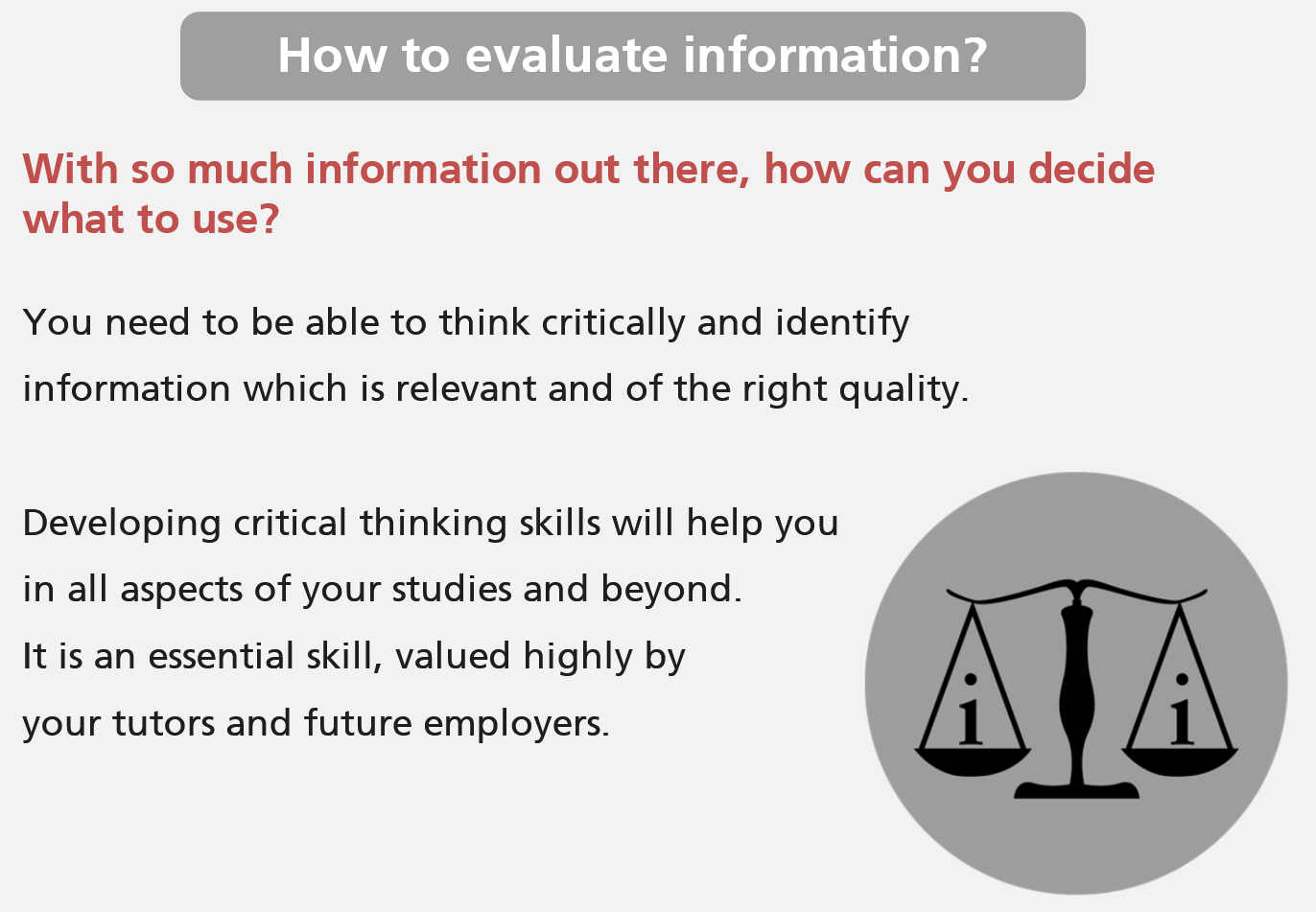Critical thinking and appraisal
You cannot take everything you find at face value. You must consider where it was published and by whom, and whether the information was created by an individual or group that was trying to present a certain message. You should ask where they got their facts. In recent years we have seen the spread of fake news, so thinking about what you are seeing, hearing or reading is essential.
Take a look at our critical thinking guide.
Next, take some time to go through the ‘Skills for Study’ critical thinking section below; you will be able to test your knowledge and think about how to apply your critical thinking skills. You will need your university username and password to login.

Watch these LinkedIn Learning tutorials, the first describes scholarly vs. popular publications and the second describes how to evaluate information. You will need your university username and password. You do not need to connect your LinkedIn account.

Now take some time to work through this interactive learning activity about evaluating information to help you decide what is relevant and good quality. It will take about 7 minutes to complete.
By the end of this activity, you should be able to…
- recognise the difference between ‘good’ and ‘bad’ information
- think critically and understand how to find good quality, reliable information
- know how to get more help if you need it
Click on the image below to start the interactive (opens a new window): 
You will find health specific resources below…
The next section covers writing and structuring a literature review.

